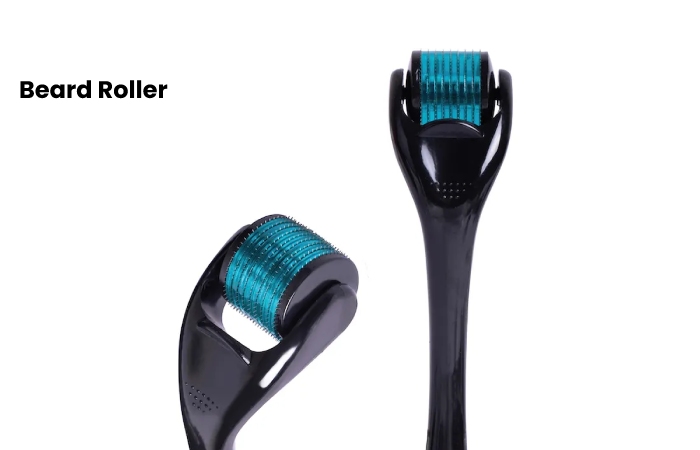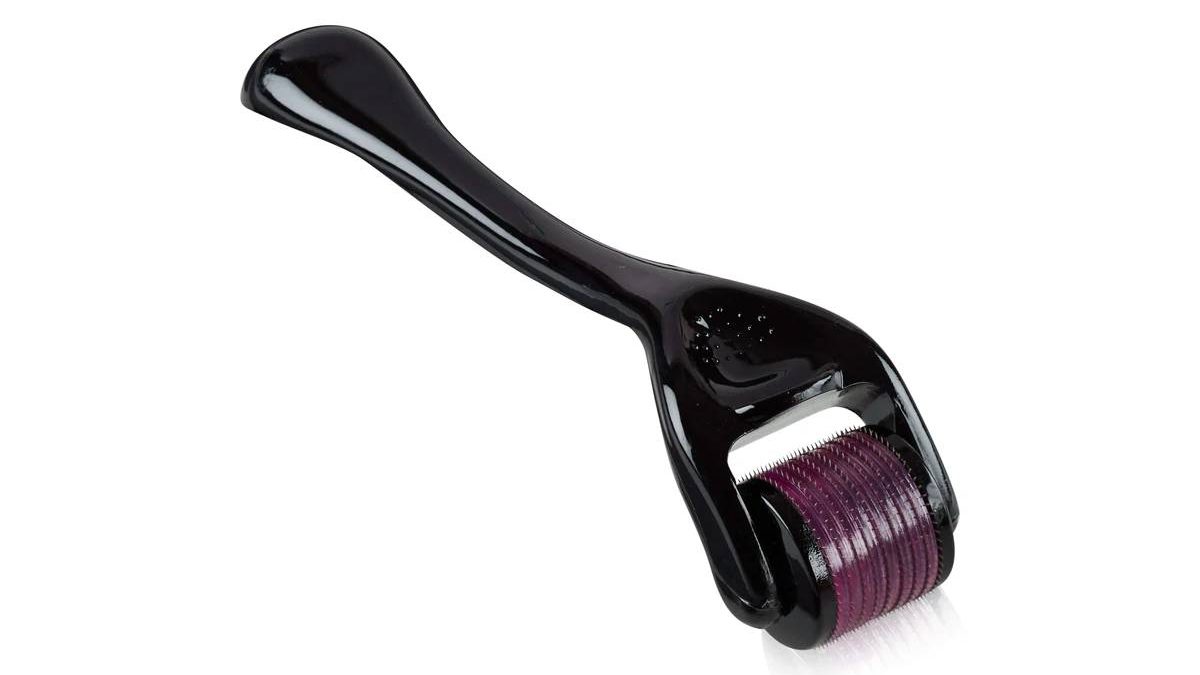Table of Contents
Introduction
How to use a Beard Roller. In a small study from 2018, 48 participants received four micro needling sessions every 30 days. At the end of 150 days, the researchers noted that the procedure was able to significantly improve:
Fine Lines Micro needling uses the skin’s natural ability to produce collagen to luxury certain skin conditions. The procedure uses needles to create “micro” holes in the skin, promoting collagen making and skin health-giving.
Micro needling can help reduce the look of acne scars, hyperpigmentation, sun spots, and even wrinkles. But it hurts. In this article, we’ll take a look at how much pain is involved and the steps you can take to make the procedure less painful.

Does the microneedle upset?
Micro needling, also known as collagen education therapy or percutaneous collagen making, is a minimally disturbing cosmetic procedure.
The purpose of the microneedles is to pierce the outermost layer of the skin and beard roller trigger the healing process. This promotes collagen production and the renewal of new skin cells.
The entire procedure takes approximately 2 hours to complete. A board-certified dermatologist or plastic surgeon performs the process. In some states, estheticians can also perform this cosmetic procedure.
Before the procedure
Your doctor will apply a topical anesthetic about 45 to 60 minutes before action creates. This helps numb the area and cut any pain that may be felt during the way.
during the system
Your doctor will use a tool that holds tiny needles, either a dermapen or a dermaroller, to perform the procedure.
The microneedling tool is sterile and designed for single use only. The microneedling portion of the procedure takes approximately 15 to 30 minutes. Once the process begins, your doctor will run the tool evenly across your skin to create tiny holes in the stratum corneum, the outermost layer of skin.
The most common feeling during the procedure is a warm, scratchy sensation as the tool is moved around the face. You may also notice pain in the “bonier” areas of your face, beard roller such as your hairline, forehead, and jawline.
after the formula
After the way, your doctor will apply saline cloths to your skin. In some bags, they may apply a gel mask to help soothe the skin and reduce inflammation and redness. They can also prescribe creams and lotions that will help with the healing process of the skin.
You may leave the office immediately after your appointment. There is no downtime necessary. You may notice some redness and minor skin irritation for 2-3 days after the procedure, but this is usually nothing to worry about and should go absent as your skin settles.
It takes time for the creation of new collagen. You will usually have to wait 2-6 weeks between sessions to allow the skin to repair itself. It may take three to four sessions to see noticeable microneedling results.
Are there things I can do to lessen the pain?
Although microneedling is a relatively painless way, you may still experience some discomfort. There are some things you can do before and after the procedure to minimize any pain you may experience.
Before the procedure
To minimize pain before your procedure:
Avoid using any products on your skin that increase sensitivity, such as retinoids or exfoliants.
Avoid laser procedures or overexposure to the sun before treatment. This can damage the skin and increase sensitivity.
Do not shave, wax, or use depilatory products before the procedure. This can lead to increased skin sensitivity.
ResearchTrusted Source suggests that prepping your skin with vitamin A and vitamin C formulations can help promote collagen production.
after the procedure
To minimize pain after your procedure:
Be sure to follow all post-operative instructions provided by your doctor.
Apply prescribed or recommended topical creams and lotions to keep skin hydrated and reduce inflammation.
Avoid washing your face with anything other than warm water and a mild cleanser for 48 to 72 hours after the procedure.
Avoid wearing makeup for at least 48 to 72 hours after the procedure. When applying makeup, only use clean makeup meetings.
Avoid direct sunlight for 48 to 72 hours after the procedure. If you plan to go outside, don’t forget to apply sunscreen.
Avoid using harsh cleansers and scrubs after your procedure. They can cause more irritation and inflammation while the skin heals.
The size and length of the microneedles can affect the level of discomfort
Research trusted Source suggests that the type, length, and number of microneedles have an impact on the amount of pain someone may experience during the procedure.
According to the researchers, longer microneedles can increase pain sevenfold, while a larger number of microneedles can double pain.
If you are concerned that the procedure will be painful, please contact your health care provider to discuss your concerns. They can provide you with information about the tools they use, as well as recommend steps you can take before the procedure to minimize pain.
What are the benefits of microneedling?
Microneedling has been researched and used as a treatment for a variety of skin conditions, Trusted Source, including:
acne scars
surgical scars
alopecia
melasmas
vitiligo
hyperpigmentation
actinic keratosis
Research has shown that microneedling can also be effective in reducing the signs of aging.
In a small studioTrus
skin texture
loose skin
Overall, microneedling is an effective cosmetic procedure with minimal pain, minimal recovery time, and excellent results for a variety of skin types and concerns.
What are the risks of microneedling?
While microneedling is a safe and effective procedure, there are some risks and potential side effects. These include:
skin redness, also called erythema
[skin irritation]
skin inflammation
Dry Skin
hyperpigmentation
hypersensitivity
acne breakouts
herpes outbreaks
infections
It is normal to have some redness and swelling of the skin after the procedure.
For some people, the inflammation can lead to hyperpigmentation and flare-ups of other conditions, such as acne and herpes. However, most people who undergo microneedling do not experience more serious side effects.
What signs or symptoms warrant a visit to the doctor?
Microneedling is a procedure that should always be performed by a licensed professional in a sterile environment to minimize risks.
If you notice any of the following symptoms after your microneedling appointment, seek immediate medical attention:
swelling
bruises
peeling
bleeding
Although rare, some of these symptoms may be a sign of a serious reaction to the procedure or a possible skin infection.
Put off
Microneedling is a cosmetic procedure used in the treatment of skin conditions such as scarring, alopecia, vitiligo, and more.
During a microneedling session, the outermost layer of skin is punctured with microneedles to promote collagen formation and skin growth. The procedure is not too painful. There are ways to minimize discomfort.
The most common side effects of microneedling are skin redness and irritation.
Microneedling requires multiple sessions to really see results, but research has shown it to be an effective, minimally invasive way to improve skin health.
How to grow facial hair
testosterone
skin condition
Genetics
supplements
tips
Put off
Overview
Although there is no recent formal data on the popularity of facial hair, it doesn’t take a study to note that beards seem to be everywhere. Growing them out seems to have very little to do with keeping faces warm and everything to do with looks and style.
But what about persons of us who have trouble growing facial hair? While there are a few tricks to boosting overall hair growth, at the end of the day it all comes down to genetics.
Is it testosterone?
It is an instinctive response to think that testosterone, the male sex hormone, is responsible for beard growth. But most men actually have similar levels of testosterone.
Low testosterone is characterized by a number of other symptoms, such as:
erectile dysfunction
sterility
decreased muscle mass
breast tissue development
If you don’t experience these symptoms, it’s likely that testosterone therapy from your doctor or a supplement won’t help.
Is it a skin condition?
In rare cases, a skin condition is to blame for the lack of hair growth. Certain skin conditions such as alopecia cause baldness or hair loss. If you have symptoms of a skin condition, likely affecting your head and hair, visiting a dermatologist might help.
In some cases, thinning or slow-growing hair is the result of hypothyroidism, an underactive thyroid. However, this condition is more common among women over 50 years of age. Fine hair or hair loss can also be a symptom of iron deficiency or anemia.
In general, it is genetics.
For most men who struggle to grow facial hair, genetics are to blame. If your parent or grandparent had trouble growing facial hair, you may too. And for those men, there really aren’t too many solutions.
Although beard implants have recently arrived on the market, they are an extreme option for a relatively minor problem.
Do beard enhancement supplements work?
With the growing popularity of beards and facial hair, some supplement manufacturers are cashing in on men who are having trouble growing beards. These companies offer supplements and creams that promise thicker, bushier beards. However, most of them lack scientific credibility.
There is some evidence that vitamin D can activate hair follicles that have become dormant. B vitamins like B-12, biotin, and niacin can strengthen and help condition hair. Read more about vitamins and hair.
One such supplement, Beard roller, promises to boost beard growth by providing nutrients like vitamin C, biotin, and vitamin A. Like hair supplements marketed to women, these vitamins and minerals are said to produce a thicker, healthier hair.
But if your body wasn’t meant to grow a beard, due to genetics, the supplement may not work. A typical daily vitamin contains similar ingredients and is likely to be cheaper.
Small tips that could be worth it
If you find it difficult to grow a beard, there is a small chance that it is simply because you are not taking care of yourself. Just like a good head of hair, facial hair requires a healthy diet and regular sleep. Beard Roller, your first steps in reaching your facial hair goal should include the following:
Reduce stress. According to the Mayo Clinic, while there’s no simple yes or no answer, some hair loss could be stress-related.
Eat a healthy diet. A balanced diet will give your body all the nutrients it needs.
Get plenty of rest. The better you sleep, the better your health will be.
don’t smoke Smoking can also cause hair loss, as a previous study points out.
Care your skin. Find out your skin type and follow a skin care routine.
Put off
You can’t grow a beard if the genetics for it just aren’t there. But, if it provides the healthiest environment for hair growth, it should help even out uneven spots or thicken existing hair.
If nothing seems to work, take comfort in the fact that fads change every few years. Very soon, a smooth face will be back in fashion and beards will pass away.
Conclusion
In addition to activating collagen and keratin production. Beard Roller micro needling may help improve beard roller hair growth by boosting nutrient-rich blood flow to the area. Healthy circulation is necessary for healthy hair growth and healthy skin. A derma roller may also activate stem-cell growth factors.

